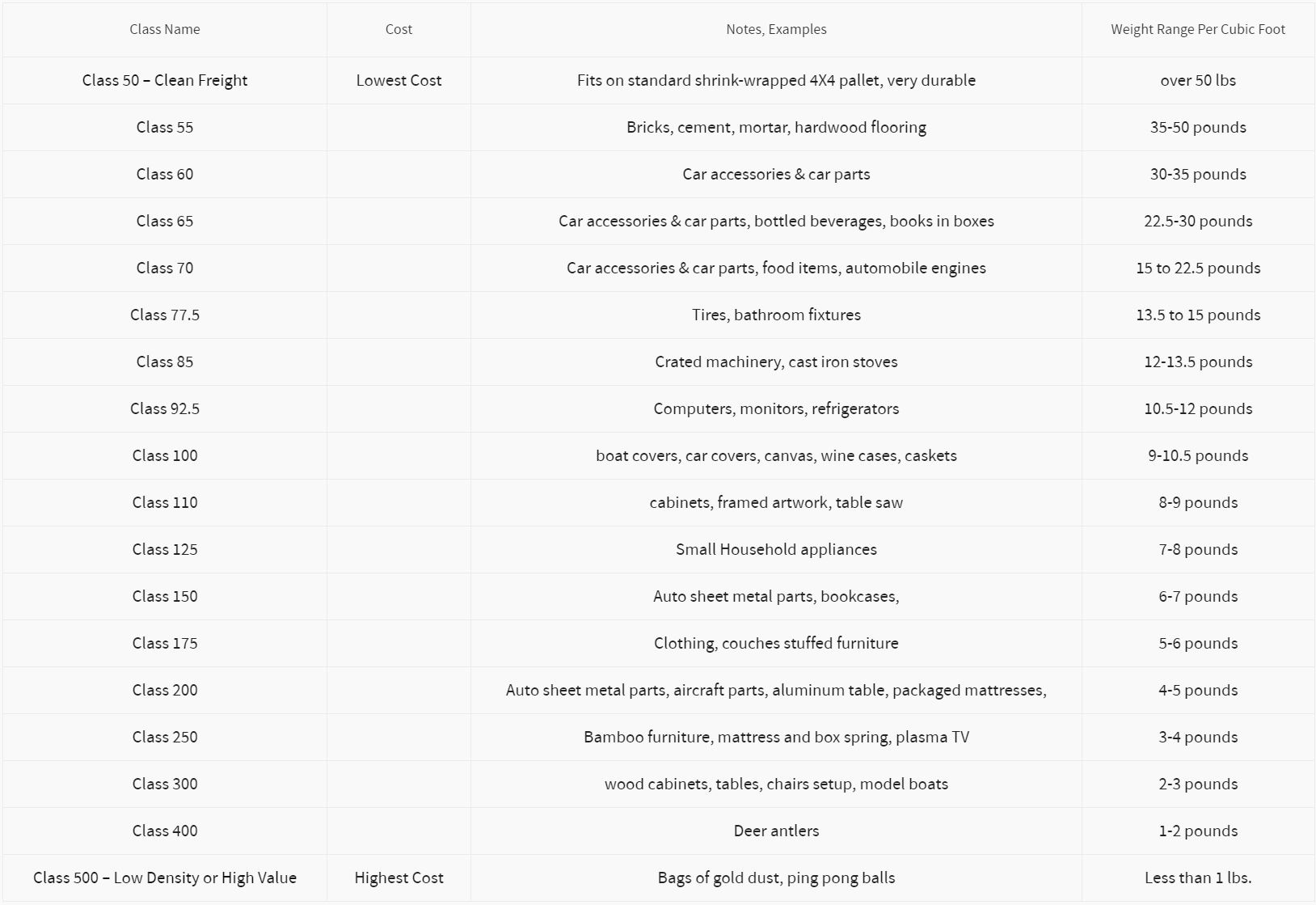Let’s explore what NMFC codes are, and why they are so important to companies in the freight and logistics world
In the world of transportation, there is a great deal of buzz surrounding topics like supply chain efficiency and technology.
But we tend to miss out on discussing the technical—sometimes confusing—lingo that describes certain industry cornerstones.
One of these concepts is NMFC codes for freight classification.
In this post, we will explore what NMFC codes are, and why they are important to companies in the freight and logistics world.
THE BACKGROUND OF NMFC CODES AND FREIGHT CLASSIFICATION
NMFC codes were born when regulators within the transportation industry realized there was a need for more effective standardization.
In an effort to establish fair measures and standardize freight pricing, the National Motor Freight Traffic Association (NMFTA) created a classification system for every type of freight.
This system divides freight into different classes—18 of them, to be exact—and is catalogued with the National Motor Freight Classification tariff (NMFC).
The 18 freight classes are defined with a number between 50 and 500. These numbers become essential when shippers and carriers need to define tariffs associated with a given shipment and set shipping rates to be charged to the customer.
Freight Class Is Based On Four Primary Factors:
- Density: The amount of space the freight takes up on a trailer relative to its weight
- Stowability: If an item is extra heavy, hazardous or extremely large, it may be difficult to stow on a trailer efficiency, which can raise costs.
- Ease of Handling: If freight is especially difficult to handle, it may be placed in a higher class.
- Liability: If freight is fragile or perishable and in need of temperature controlled or refrigerated transportation, it may be assigned a higher class.
These factors define the freight class, which in turn allows shippers to know what it will cost to move the freight. If shippers and carriers fail to determine a freight class or classify freight incorrectly, this can lead to extreme inefficiencies and even dangerous situations.
Here’s a great chart from Freight Management Logistics that shows some examples of types of freight and their respective freight class based on a number of key factors:

Want To Look Up NMFC Classification Codes For Your Freight?
The NMFTA has a very helpful updated list of NMFC codes based on freight types.
Here is a link to the official NMFC codes pdf guide from the NMFTA!
FREIGHT CLASS AND LTL FREIGHT
As we’ve discussed, all commodities in the United States are given one of 18 different freight classifications.
These classifications are essential for determining the cost of a given load, but they are also an important factor if it becomes necessary to deal with freight claims.
It becomes extremely important in the case of LTL freight shipments to get freight classifications right. Freight classification—and consequently, the cost of a shipment—can determine the profitability of an LTL logistics and transportation company.
Some businesses operating in the world of transportation, such as specialty distributors or refrigerated transportation companies, base their entire business model off of the types of freight they ship. Without NMFC codes, this would be very difficult to do.
